Post Drought Spring Recovery
By Chris Humphrey MBPR FQA, Technical Manager
 Although it may now be damp and cool we can all recall the exceptionally high temperatures and drought of last summer. The grass took a big hit and many areas thinned out. This could be a blessing in disguise as it was the weaker poor quality grasses that suffered the most and it has given us an opportunity to fill in thin or bare areas with high quality and more drought tolerant grasses. However, if we don’t fill in the gaps the moss, weeds and annual meadow grass will soon take over. Concentrate on removing the dead plant material and any weeds or moss that have taken the opportunity to invade the space. Remember that the new grass will grow in the soil and not a thatch layer so concentrate on thatch removal and surface preparation.
Although it may now be damp and cool we can all recall the exceptionally high temperatures and drought of last summer. The grass took a big hit and many areas thinned out. This could be a blessing in disguise as it was the weaker poor quality grasses that suffered the most and it has given us an opportunity to fill in thin or bare areas with high quality and more drought tolerant grasses. However, if we don’t fill in the gaps the moss, weeds and annual meadow grass will soon take over. Concentrate on removing the dead plant material and any weeds or moss that have taken the opportunity to invade the space. Remember that the new grass will grow in the soil and not a thatch layer so concentrate on thatch removal and surface preparation.
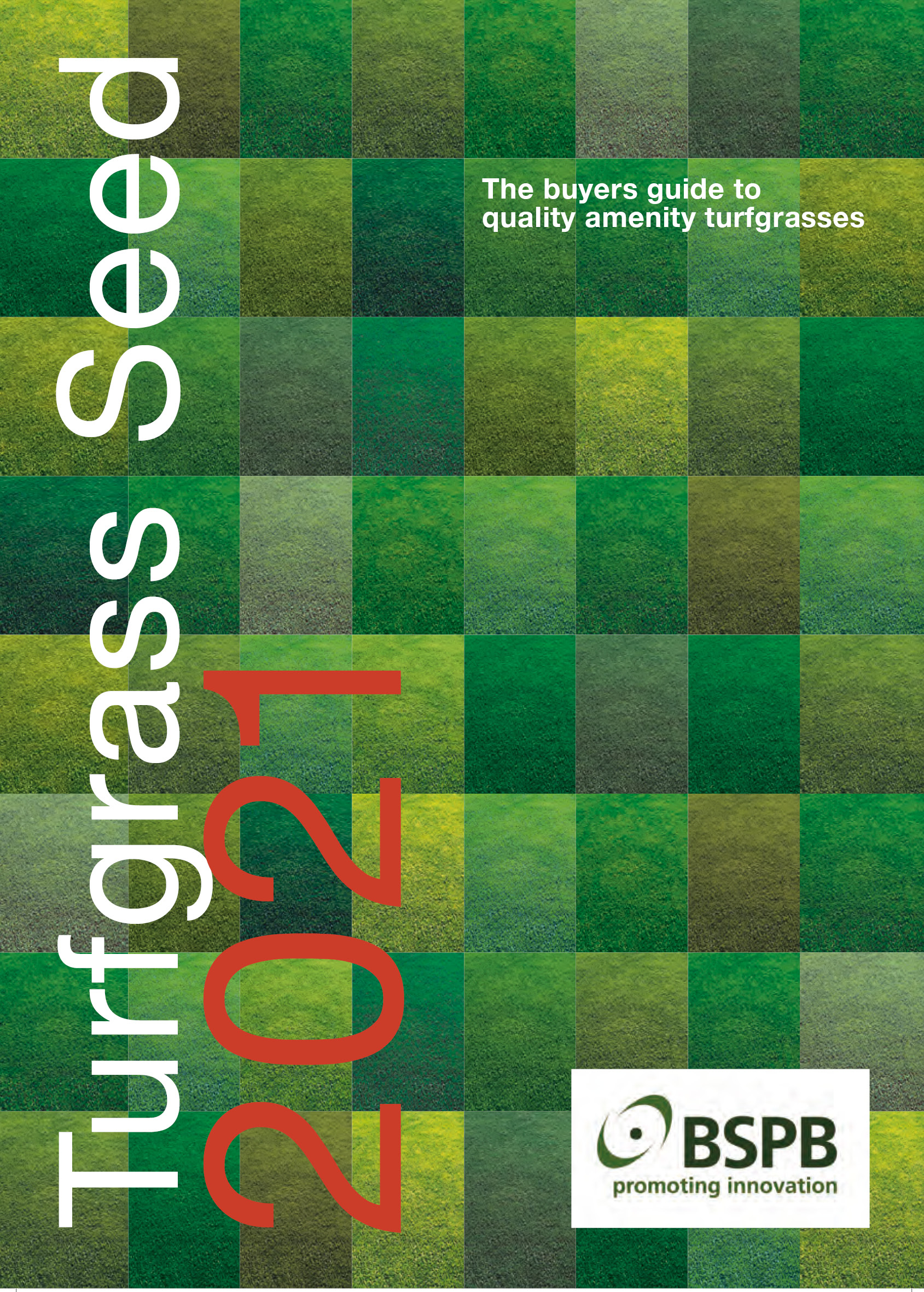 Choose the correct grass for your site. Many dwarf ryegrasses are now so fine that they are being used in a wide variety of situations, the best of which are even being used on golf greens. Ensure that you don’t just buy any seed, look at the quality of the cultivars, these can be found in the BSPB book (If you would like a copy, contact your Collier Turf Care Representative).
Choose the correct grass for your site. Many dwarf ryegrasses are now so fine that they are being used in a wide variety of situations, the best of which are even being used on golf greens. Ensure that you don’t just buy any seed, look at the quality of the cultivars, these can be found in the BSPB book (If you would like a copy, contact your Collier Turf Care Representative).
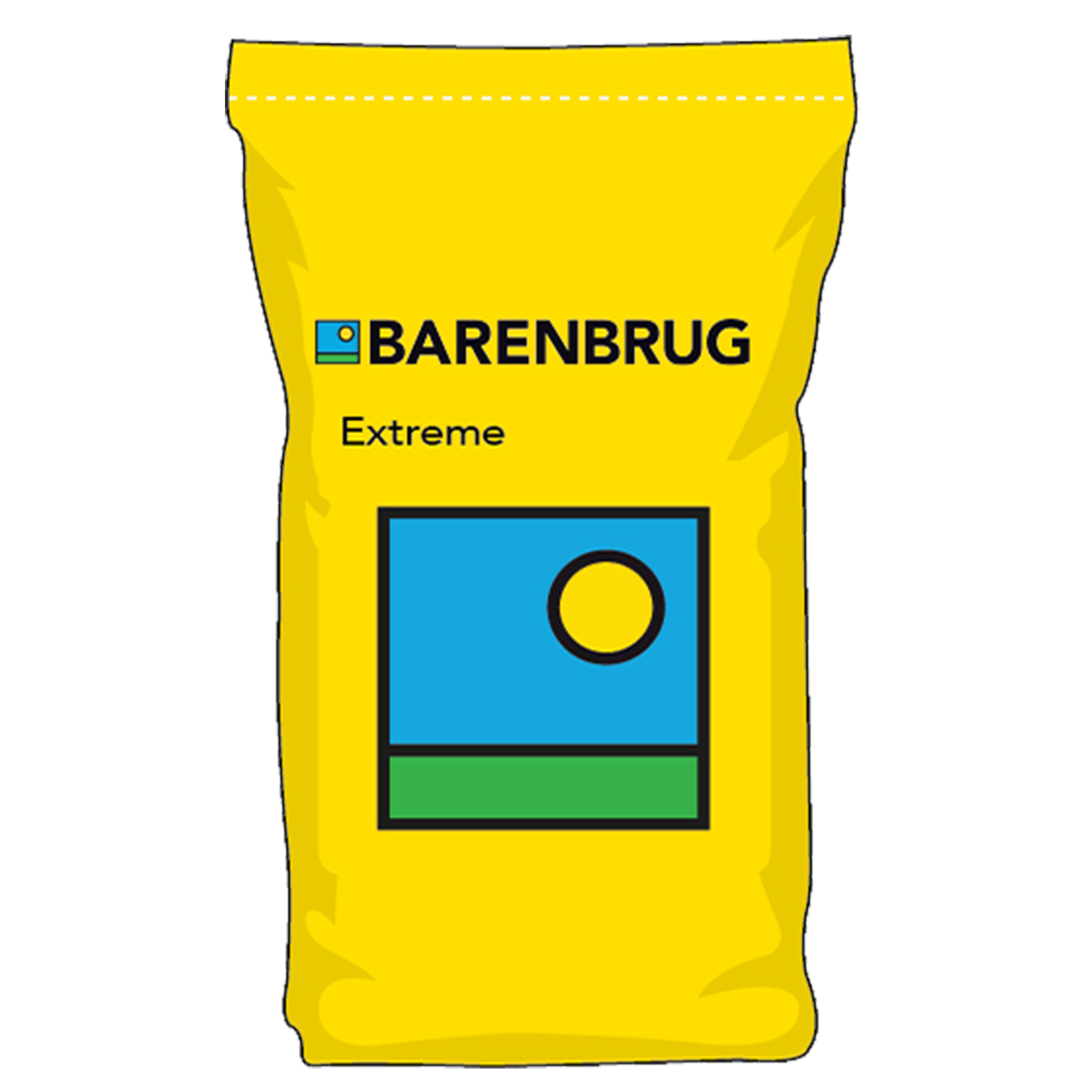 Not all seed is the same. You may come across cheap seed but remember it is cheap for a reason. Choose seed that has the highest level of purity and the highest germination rate. Some seed is not as pure as others and the bag may contain Annual Meadow Grass seed, weed seeds of chaff. Use a trusted seed merchant such as Barenbrug that cleans their seed to a higher standard. You must plant your seed to the correct depth and don’t just scatter it on the surface.
Not all seed is the same. You may come across cheap seed but remember it is cheap for a reason. Choose seed that has the highest level of purity and the highest germination rate. Some seed is not as pure as others and the bag may contain Annual Meadow Grass seed, weed seeds of chaff. Use a trusted seed merchant such as Barenbrug that cleans their seed to a higher standard. You must plant your seed to the correct depth and don’t just scatter it on the surface.
Golf Tee before and after a drought
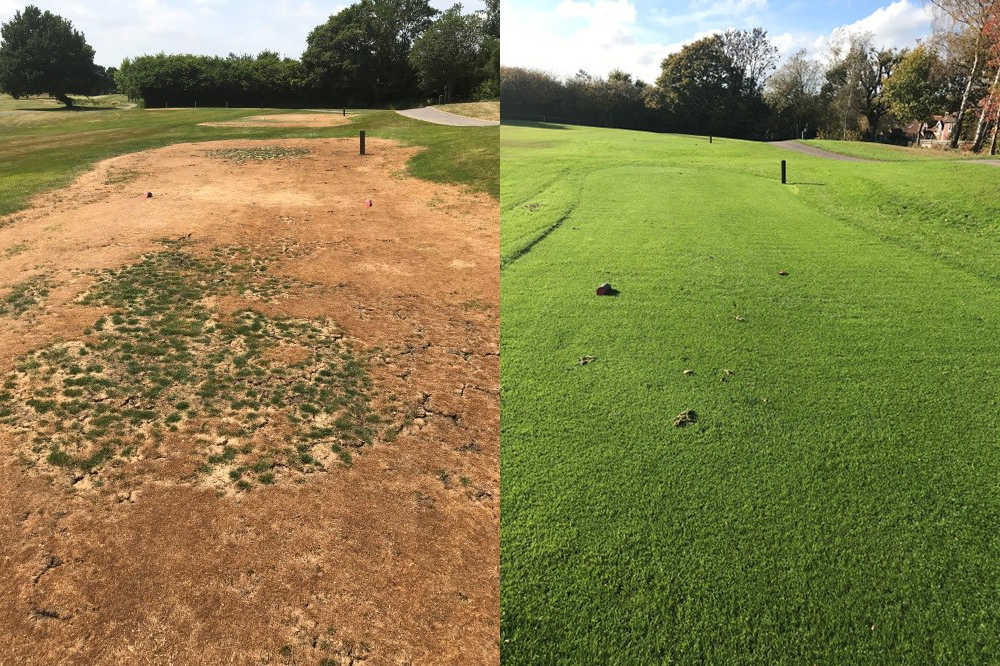
This golf tee suffered from last summer’s drought. This tee had irrigation but it was not working all through last summer and as the tee had relied on irrigation for many years before, the roots were shallow as they had not had to seek out moisture from below the top couple of inches. Interestingly the grass surviving in the middle is where the tee has been divoted with newer cultivars of dwarf ryegrass that are far more drought resistant. This tee was scarified heavily, the debris removed, levelled and Barenbrug Extreme Dwarf Ryegrass drilled to a depth of 15mm. It was irrigated and within 4 days the seed had germinated. Once it had reached 15mm in height it was fed with a light Nitrogen and Magnesium feed. Note, always avoid using feeds that have a high salt index or contain iron as these can scorch the tender new seedlings.
Help prevent a reoccurrence of drought stress again this summer
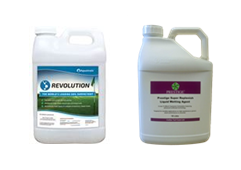 Start now by applying a quality water management product, not just a basic wetting agent but something to help you control a balance of air and water for controlled healthy turf growth.
Start now by applying a quality water management product, not just a basic wetting agent but something to help you control a balance of air and water for controlled healthy turf growth.
If we should happen to get high temperatures again this summer, when watering your turf, water heavily and leave it for 2 or 3 days and then water heavily again. That way the roots will follow the water as it goes down and not just live on the top couple of inches, thus making your turf more drought resistant.
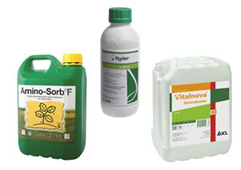 There are a range of products that can help turf guard against the intense summer heat and damaging sunshine. Extreme levels of UV light damage plant cells and the plant closes down to protect its self at the same time preventing any helpful products entering through the stomata. By applying a pigment to the turf this can act like a sun screen and prevent plant damage. Also the inclusion of amino acids and stress relief products to the summer maintenance programme builds a plant more equipped to cope with the extremes of summer stress.
There are a range of products that can help turf guard against the intense summer heat and damaging sunshine. Extreme levels of UV light damage plant cells and the plant closes down to protect its self at the same time preventing any helpful products entering through the stomata. By applying a pigment to the turf this can act like a sun screen and prevent plant damage. Also the inclusion of amino acids and stress relief products to the summer maintenance programme builds a plant more equipped to cope with the extremes of summer stress.
For expert help and advice contact 'The Grass Guys' at Collier Turf Care